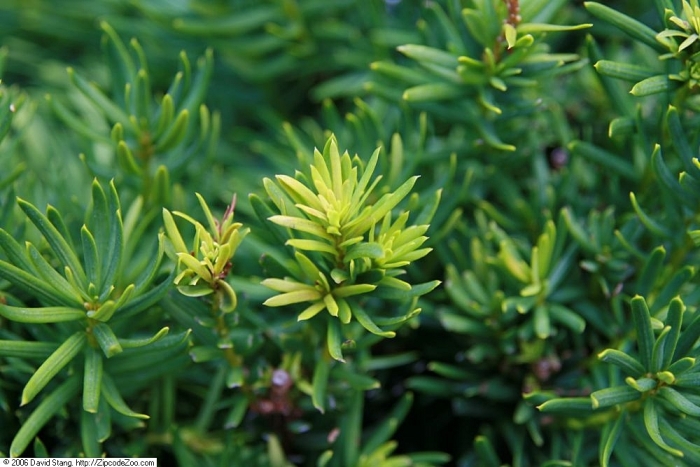Hybrid Yew
(Taxus ×media)
Hybrid Yew (Taxus ×media)
/
/

Photo by David J. Stang
CC BY-SA 4.0
Image By:
Photo by David J. Stang
Recorded By:
Copyright:
CC BY-SA 4.0
Copyright Notice:
Photo by: Photo by David J. Stang | License Type: CC BY-SA 4.0 | License URL: https://creativecommons.org/licenses/by-sa/4.0 | Uploader: David Stang | Publisher: Wikimedia Commons | Title: Taxus_x_media_Citation_1zz.jpg | Notes: Transferred from Flickr via #flickr2commons |



















































Estimated Native Range
Summary
Taxus ×media, commonly known as Hybrid Yew, is a slow-growing evergreen shrub resulting from the cross between the English yew, Taxus baccata, and the Japanese yew, Taxus cuspidata. It was developed by T.D. Hatfield in the early 1900s. Hybrid Yew thrives in a variety of conditions but is often found in moist, well-drained soils of forest understories and shaded areas. Mature plants can reach up to 20 feet in height and 8 feet in width, depending on the cultivar. The plant features dark green needles and produces red, berry-like arils that are attractive but toxic.
Hybrid Yew is highly valued for its dense, dark foliage and its versatility in the landscape. It is commonly used for hedges, foundation plantings, and topiary, including bonsai. Its ability to withstand heavy pruning makes it a favorite among gardeners for creating formal shapes. In cultivation, it requires well-drained soil, can tolerate drought once established, and prefers partial to full shade. While it is generally disease-resistant, it can suffer from root rot in poorly drained soils and may be susceptible to scale insects and mealybugs. Gardeners should be cautious as all parts of the plant, except the fleshy part of the aril, contain the toxic alkaloid taxine, which is harmful to mammals if ingested.CC BY-SA 4.0
Hybrid Yew is highly valued for its dense, dark foliage and its versatility in the landscape. It is commonly used for hedges, foundation plantings, and topiary, including bonsai. Its ability to withstand heavy pruning makes it a favorite among gardeners for creating formal shapes. In cultivation, it requires well-drained soil, can tolerate drought once established, and prefers partial to full shade. While it is generally disease-resistant, it can suffer from root rot in poorly drained soils and may be susceptible to scale insects and mealybugs. Gardeners should be cautious as all parts of the plant, except the fleshy part of the aril, contain the toxic alkaloid taxine, which is harmful to mammals if ingested.CC BY-SA 4.0
Plant Description
- Plant Type: Shrub, Tree
- Height: 4-6 feet
- Width: 4-6 feet
- Growth Rate: Slow
- Flower Color: N/A
- Flowering Season: Non-Flowering
- Leaf Retention: Evergreen
Growth Requirements
- Sun: Part Shade, Full Shade
- Water: Medium
- Drainage: Fast, Medium
Common Uses
Border Plant, Deer Resistant, Hedges, Low Maintenance, Street Planting
Natural Habitat
Moist, well-drained soils of forest understories and shaded areas
Other Names
Common Names: Anglo-Japanese yew
Scientific Names: Taxus ×media , Taxus baccata x cuspidata , Taxus baccata × cuspidata , Taxus umbraculifera var. hicksii , Taxus xmedia , Taxus ×media f. hatfieldii , Taxus ×media f. hicksii
GBIF Accepted Name: